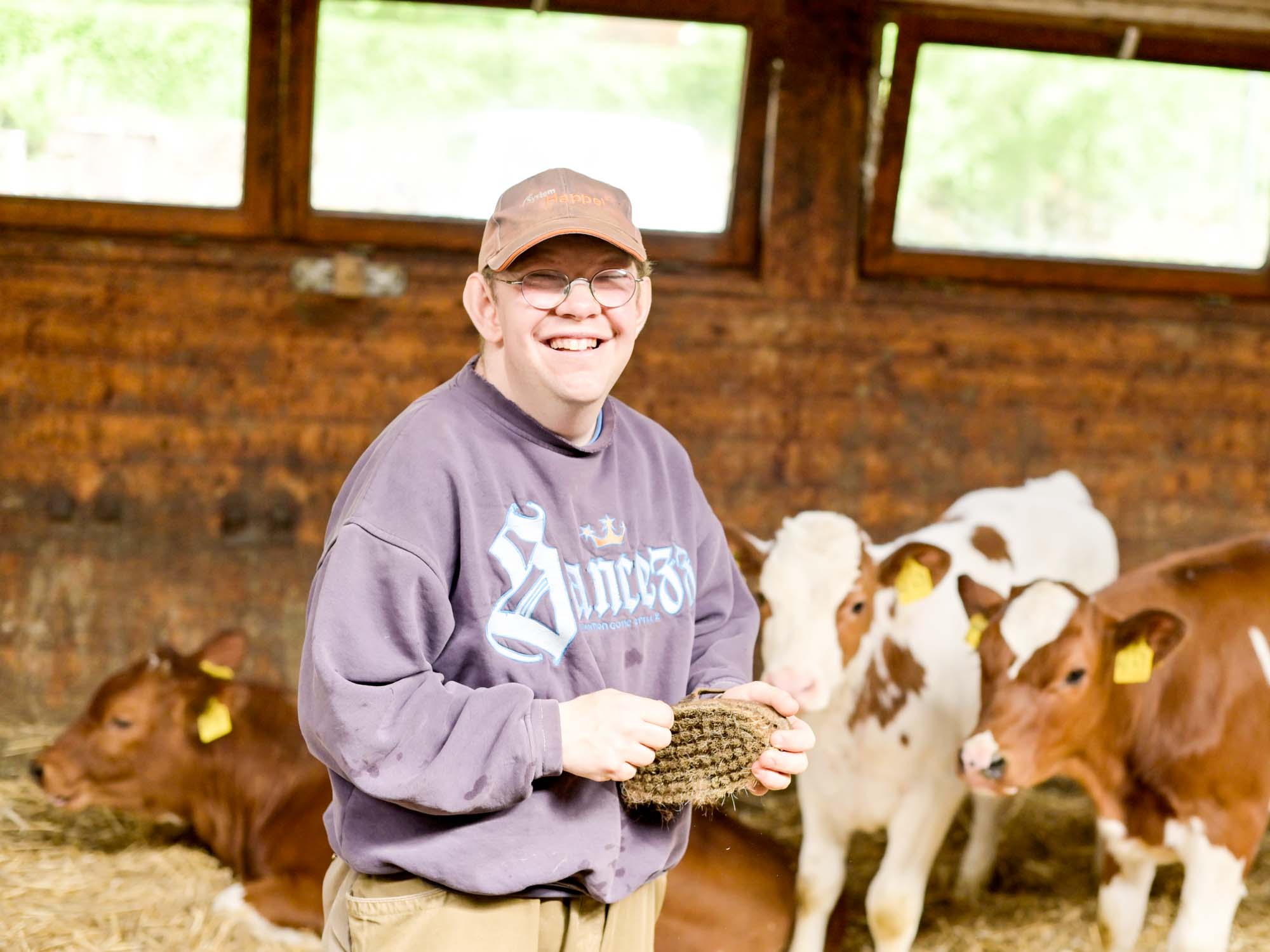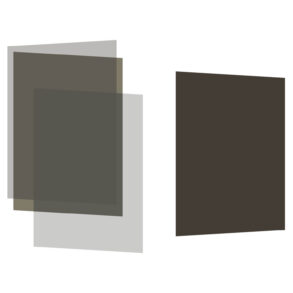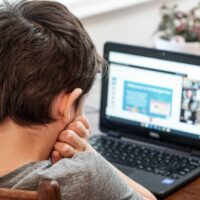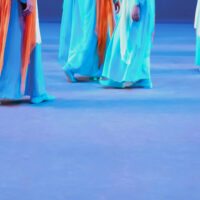Social therapeutic communities are places for shaping life and work. The Youth Section research team at the Goetheanum is devoting a study to three communities to investigate how the design of lived inclusion in the respective communities can contribute to the question of contemporary living and working conditions in social therapeutic contexts.
Humans are terrestrial beings. They need the earth to develop. Climate catastrophes, wars, flight, and, last but not least, the Covid pandemic make the mutual interdependencies clear: the earth is the basis for human life and work. Since the time of the industrial revolution, the relationships between people as well as with their living spaces have been subject to ever-increasing fragmentation and isolation. Previously linked by work and life in a village, rural communities, or trades in clear local and family solidarity relationships, today we are facing changing social and individual requirements amid the digital transformation in terms of production and way of life. In the context of market-based performance orientation, this means that each individual successfully provides their skills in the labor market. More and more people, mainly connected by virtual reality across the globe, find themselves woven into a network of anonymous, functionalized social subsystems that have replaced the previously direct human solidarity and care communities tied to local resources of the earth. It seems as if people are increasingly detaching themselves from others and the earth. They lose their consciousness of the earth and have a tendency towards social isolation. At the same time, there are burning questions of healthy interaction with each other and the earth – the question of communion with the earth. Can a new connection to the earth be built out of love? Can we reshape life and work from the love of the cause?
The social therapeutic living and working communities for adults needing assistance are places where a living and working space is to be formed that has a healing effect on people and the earth. Various processes and structures of such village communities have emerged, so neither generalization nor a direct comparison does justice to reality. Instead, the underlying values and what has evolved from the various forms are relevant.
The Current Organization of the Social Therapeutic Impulse
The fact that work and life are increasingly regarded as two separate spheres, family as a point of reference is called into question, and the continuity of traditional solidarity relationships is no longer given also means changed challenges for the organization of social services. Over the past 70 years, the structure of aid and welfare relationships has developed into an individual-centered benefit system which, according to the social model, goes hand in hand with people being prepared as much as possible for the ‹primary labor market.› In the three village communities, Altenschlirf, Münzinghof, and Sassen-Richthof, this has led to the question of the sources of work and life and how the social therapeutic mission for people with assistance needs can be realized. The new legal framework of the German Federal Participation Act, which demands participation and inclusion in the various areas of life and wants to make it measurable, requires a reflection on the idea of inclusion in connection with the Anthroposophical image of human beings and how this can be implemented in today’s living and working conditions. For this purpose, the three communities, Münzinghof (near Nuremberg), Altenschlirf (near Fulda), and Sassen-Richthof (also near Fulda), set up collegial meetings a few years ago.
The research team of the Youth Section, at the request of the three communities, set up a participatory research project in July 2021 to report on the approaches that the village communities want to realize and to identify their development potential.
An Attempt at a Healing Social Form
The practical approach of Anthroposophical social therapy is based on the idea of considering human beings in their being and potential. Instead of exclusively meeting a ‹need for help›, individual and social skills should develop through the coexistence and cooperation of people with and without assistance needs. The value-added processes and the experienced meaningfulness in the work of the workshops and in agriculture, the common forms of living and working form a framework in which people with and without the need for help in everyday life are shared, and at the same time, the abilities of each individual person are perceived. The artistic and religious-spiritual accompaniment and design of the daily, weekly, and seasonal rhythms through festivals and artistic projects create a rhythm that supports the spiritual connection between earthly necessities and spiritual thoughts.
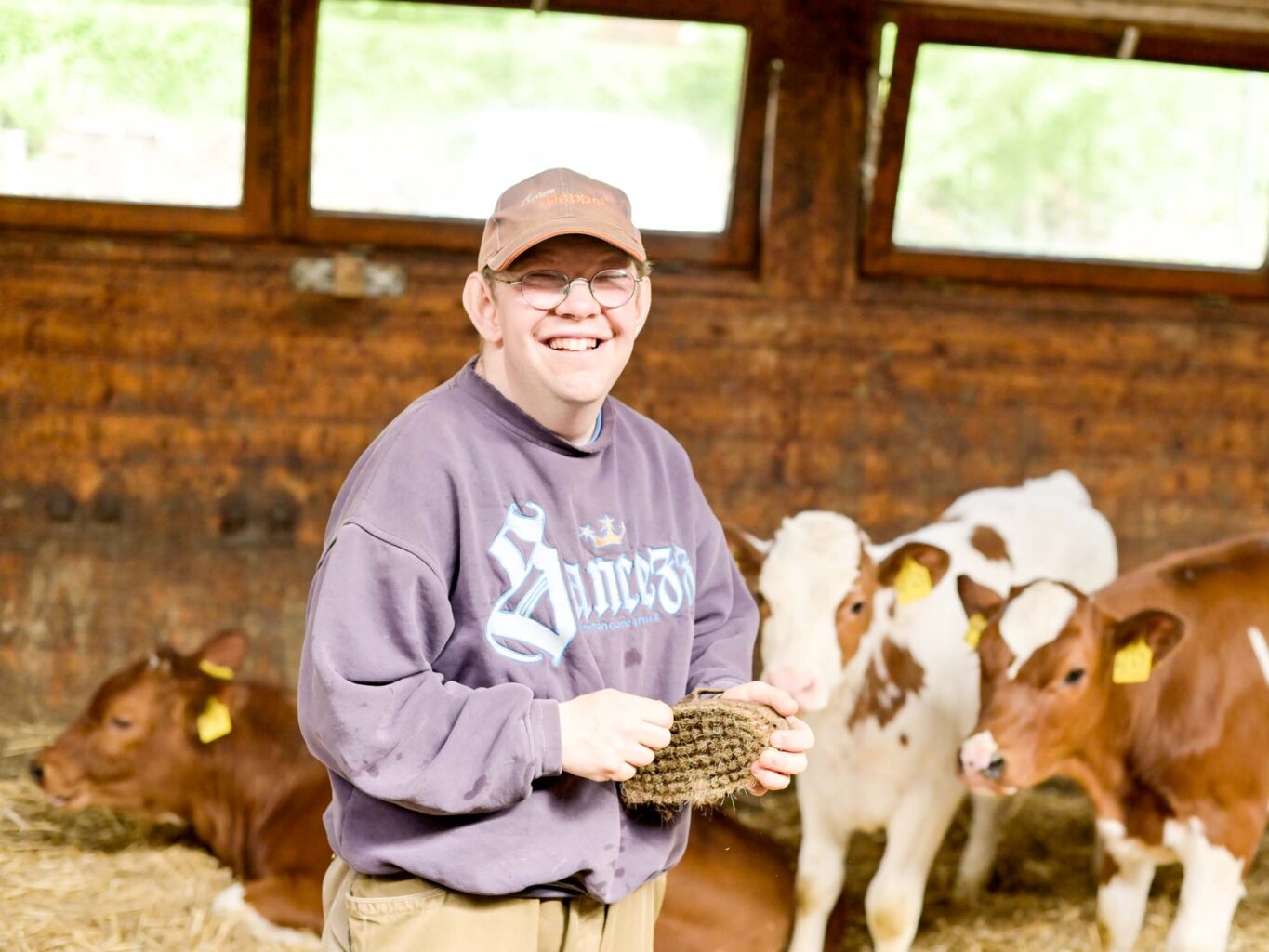
Development through Shared Living
The interest in the question of how we want to live and work is very justified. In many places worldwide, the form and nature of life and work are not necessarily free choices. They are dictated by the circumstances of the environment and social contexts. It could therefore be considered a privilege to ask this question at all. Intensified by the pandemic of the last two years, the desire for meaningful work and a life in harmony with nature has received new attention. The search for a context that enables these aspects in common forms is the primary motive for people who come to the communities. Not only living together in the countryside, surrounded by greenery, meadow, and forest, attracts people, especially living in a ‹family house› is crucial. Here, people with and without assistance needs of different generations live together in one household, maintaining and shaping the togetherness jointly accompanied by house managers (often a couple or a family with their own children).
Within the social science discourse and social legislation (Act to Strengthen the Participation and Self-Determination of People with Disabilities – BTHG), the model of ‹self-determination› and the possibility of realizing one’s own life concept is decisive for the support structures for people in need of assistance. In Anthroposophical communities, attempts are made to cultivate a holistic understanding of the human being that implicitly expands the biopsychosocial image of humans by the spiritual dimension. The recognition of the spiritual essence creates a space for the developmental impulse of each human being, in which the biography is shaped as an expression of the individual and common fate. The attentive accompaniment pays attention to these enabling development conditions for the individual. As people in the community share a large part of their biography with each other, a space is formed in a clear social context that creates security and continuity in living together as a basis for looking not only at everyday life but also at deeper personal development questions that go beyond existing abilities and obstacles. At this level of being human, no distinction is made between people with and without the need for help.

Living together forms a supporting pillar in the communities within a social therapeutic mission framework. The forms it takes in the three living and working communities range from the originally founded ‹Houseparents Model› to individual living with a connection to a specific house community, residential units that enable care to residential communities, where everyday life is designed in consultation with all residents of the house. These opportunities have been expanded in recent years in the three places of life in response to the needs and necessities of the people. In addition, even if it corresponds to one of the above forms, each house takes on a completely individual form. Certainly, these models are not an option for all people. However, it offers an alternative way of life that invites you to participate in joint development.
For the house managers and employees, social service is therefore also a part of their own lives, their ‹family life.› This merging of work and individual private life can encourage a more conscious approach to questions about boundaries, inner quality, and the associated meaning.
Work as an Expression of Realized Impulses
Life swells into the communities from agriculture and nursery. In the rhythm of nature, the products not only provide a healthy food basis and a source of income in further processing the products. They benefit the co-implementation of the great cycles, the processes of interaction, and the cultivating care of the earth. A global context, self-efficacy, and meaningful action can also be experienced in the work in the workshops. In the artisanal design and processing of diverse products, each employee can contribute their own skills according to their inclinations: The ‹creators› supply the logging plant with wood and thus reliably and sustainably heat the houses of the community. In the candle workshop, the beeswax candle grows through patient calm – millimeter layer after another. This results in high-quality, meaningful, artistic products expressing human beings’ creative potential. Experiencing one’s own work in this way can give employees self-confidence and offer an essential identification with a profession that is formative for their own biography. Therefore, it is also a special concern in the communities not to evaluate the value of workshops and agriculture from the capitalist logic of efficiency but to put the qualities of work for people and the environment in the foreground. Through the exchange of goods, markets, and the execution of orders, the communities are also in contact with businesses, shops, and people in the region, thus radiating community life further into the surrounding area.

Common Social Training Ground
The form of the organizational and leadership structure in the communities as self-governing organizations enables and requires a high degree of individual responsibility and initiative. Here, ‹work› becomes joint negotiation and independent assumption of tasks to realize the agreed concerns. The freedom to realize one’s own impulses in the context of the community, the possibility of participation in various working groups and areas, and the free organization of life in the houses are perceived as very important by many people in the community. Self-determination and co-creation are also made possible and practiced for people needing assistance in various forms and committees, both individually and through advocacy.
This way of living and working together requires, on the one hand, an attitude of responsibility for the whole, which always has the other in mind and seeks to reconcile one’s own needs with those of others. On the other hand, trust becomes visible as a supporting and enabling force that makes working on free initiative and self-determination possible in the first place. In this way, community becomes an individual and common training ground in which inclusion and participation in everyday life and work are shaped in a dialogical flow.
Places to Deal with Fundamental Questions of Being Human
As part of the research project of the Youth Section, we asked the participants about the community as a place of learning and development. The transitions between work and life move fluidly in the field of tension between consciously set demarcation into clear areas of responsibility and freely taken initiative. The negotiation processes represent a common social training path.

The model of an equal and inclusive society can also be looked at more closely in the communities. For a long time, people needing assistance were excluded from social life. This has gradually changed – also as a conscious rethinking after the horrors of the Nazi period – the medical view of ‹disability› as a functional restriction has been expanded to include the recognition of the social dimension and has finally led to the establishment of rights for people with disabilities as human rights. The right to wish and choose the place of life, the self-determined organization of the day and leisure time, and the most barrier-free participation in public life are anchored in the Federal Participation Act as an expression of the fully recognized equal rights and human dignity of those affected. Against the background of increasing inequality worldwide and the associated potential for conflict, the social discourse on inclusion and participation is an important aspect in the struggle for humane and sustainable social design. Social therapeutic village communities are a possible social form whose self-governing organizational structure is based on free initiative and solidary cooperation. In the approaches of curative education and social therapy, their Anthroposophical impulses are an alternative to institutional care and the medical view of disability. People with and without assistance needs jointly shape participation needs to form forms of life and work that heal people and the earth. In this way, living and working communities can be regarded as places of research in which future-oriented impulses of the fate association are practiced, and practical knowledge for sustainable development in an equal society is gained.
In a follow-up article, the research team will further elaborate on these approaches from the cooperation with the three village communities based on the results.
The communities of the participatory research project:
Community Altenschlirf
Verein Gemeinschaft für Heilpädagogik und Sozialtherapie [Association Community for Curative Education and Social Therapy]
Community Münzinghof
Verein Die Lebensgemeinschaft [Association The Cohabitation]
Community Sassen und Richthof
Verein Lebensgemeinschaft [Association Cohabitation]
Translation Monika Werner

